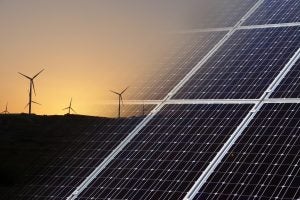Companies Want Clean Energy – These 2 EPA Programs Help Them Get It.
 For companies, future planning is simply good business. This is why many in Corporate America – having long accepted that climate change is real – are continuing to transition towards low-carbon energy options and to work with the U.S. Environmental Protection Agency (EPA).
For companies, future planning is simply good business. This is why many in Corporate America – having long accepted that climate change is real – are continuing to transition towards low-carbon energy options and to work with the U.S. Environmental Protection Agency (EPA).
Recently, it was reported that under the watch of newly-appointed EPA Administrator Scott Pruitt, the environmental agency’s budget could be cut by 24 percent – to roughly $6 billion, its lowest since the mid-1980’s. If this happens, it may be up to the business community to maintain its vigilant eye on the environment and future while helping today’s economy thrive.
Here’s a look at just two of the many EPA programs that have helped business transition to a clean energy future.
The Clean Power Plan
Many in the business community strongly supported the EPA’s Clean Power Plan (CPP) – the first-ever national limits on carbon pollution from power plants. The argument? Dirty sources of energy generation are becoming a growing concern for corporate America. These energy sources are increasingly uneconomic. Fortune 500 companies routinely set renewable energy and emissions reduction goals, but find roadblocks in many energy markets around the country.
[Tweet “Companies Want Clean Energy – These 2 EPA Programs Help Them Get It.”]
Fortunately, the CPP can open new opportunities for businesses interested in operating in a clean energy economy. The rule’s flexible framework puts states in the driver’s seat to set plans that call for the most appropriate and cost-effective solutions for meeting pollution reduction targets while spurring innovation.
The CPP is positioned to do the following:
- Generate $155 billionin consumer savings between 2020-2030
- Create 3x as many jobs per $1 investedin clean energy as compared to $1 invested in fossil fuels
- Lead to climate and health benefits worth an estimated $54 billion, including avoiding 3,600premature deaths in 2030
The Green Power Partnership
The Green Power Partnership is a voluntary program launched by the EPA to increase the use of renewable electricity in the U.S. Under the program, businesses are armed with resources and provided technical support to identify the types of green power products that best meet their goals. Since its inception, the Partnership has made notable progress in addressing market barriers to green power procurement.
We don’t know what will happen in Washington over the next few years. But many businesses are moving forward.
Through the Partnership, companies can reduce their carbon footprints, increase cost savings, and demonstrate civic leadership, which further drives customer, investor and stakeholder loyalty. At the end of 2015, over 1,300 Partners were collectively using more than 30 billion kilowatt-hours (kWh) of green power annually, equivalent to the electricity use of more than three million average American homes.
Long-term economics versus short-term politics
We don’t know what will happen in Washington over the next few years. But many businesses are moving forward. Rather than shift course, corporations are increasing investments in clean, reliable power, a move that is consistent with sound business practices.
But business can’t do it alone. The EPA supports responsible companies who have committed to reducing their carbon footprints while safeguarding our planet. It’s time for business to not just leverage their scale and buying power to help accelerate the transition to a clean energy future, but to speak up in favor of maintaining a well-funded agency that continues to make decisions based on sound science and the law.
This post originally appeared on our EDF+Business blog.










